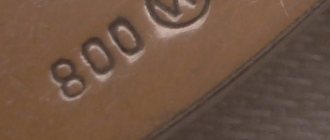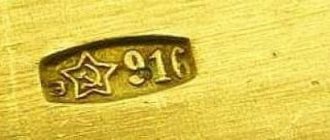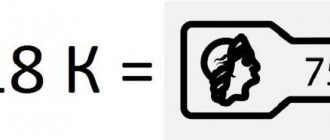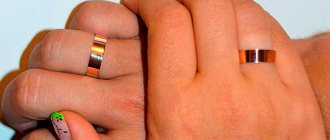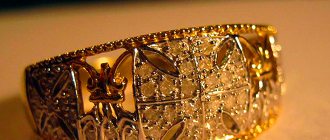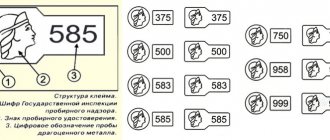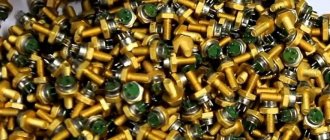Each mark on silver belongs to one or another assay system. For example, the hallmark of 84 hallmarks refers to the ancient hallmark system, which is called “spool”. This is how silverware was branded even before the revolution, although this method was actively used in the USSR. The 84 silver hallmark appeared at the end of the 18th century, but other markings also exist. Now craftsmen work according to the metric system and test products according to a special table. The set will highlight the hallmarking of precious metals, their principles and types of alloys that are subject to assaying.
What does a hallmark mean on silver items?
You will not find such marks on silver bars, which do not have impurities. The fact is that pure precious metal is very soft and is not intended for creating jewelry or decorations. Craftsmen deliberately began to add other impurities to these metals in order to make the raw material harder and more convenient for processing. In addition, objects made of pure metal have the ability to lose shape.
These may be various components that will be indicated in the product certificate. The most popular additives were considered to be zinc, aluminum, copper and cadmium. Based on the amount of impurities in ounces, the fineness of the silver or other precious metal can be determined. The hallmarking system prescribes the percentage of pure silver in the alloy.
What does a hallmark mean on silver items?
On a note! The number of the hallmark on silver objects or jewelry means how many shares of silver are present in the product, and how many shares of additional impurity.
Composition and properties of silver alloy with 875 purity
The number 875 means that per 1000 g of alloy there are 875 g of pure silver and 125 g of various impurities.
Soviet 875 silver has established itself as an example of quality, so products produced during the Soviet era, when standards were strictly adhered to, are valued much higher than products with modern markings.
Nowadays, most often, copper is used as an alloy, which gives the product strength, but also a yellowish tint. Aluminum, nickel, and cadmium can also be used as impurities. Each of the additives directly affects the color and physical properties of the resulting alloy. Some production options may have used platinum and palladium. Interestingly, nickel and platinum give the alloy a color that cannot be distinguished from the color of white gold, which unscrupulous sellers can take advantage of by offering to purchase an 875 gold item.
Source Jewelry (Authors: V.I. Marchenkov) p. 44.
How can you understand, by looking at the numbers 875 on the product, whether it is gold or silver?
It's very simple: gold is not marked with the 875 hallmark, just like platinum. Only silver can have such markings.
The presence of copper in the composition, although it makes the alloy hard, causes rapid darkening of the metal. Therefore, products made from 875 silver are almost always coated with gold, rhodium or enamel, which preserves and enhances their shine. Also, when copper is added, ductility is lost, so it becomes difficult to give small elegant details to products.
History of the Assay System
Not only numbers are used by the assay system, but also letters. If previously the sample carried more detailed information: the value of the item, the name of the jewelry maker and even the date of manufacture, now branding occurs strictly according to a system table. In Rus' this art has been studied for a long time. Only the master himself or his chief assistant could set samples. At the beginning of the 19th century, the Russian emperor even issued a decree that special chambers should be equipped for hallmarking silver and other metals.
The marking system has evolved, and along with it, the print itself will periodically change. There was one for each category of precious metals. The first print was in the form of a woman’s head in a kokoshnik, but each individual district in the Russian Empire had its own mark, on which letters were printed. They were the initials of the head of the district. Then it was decided to put an abbreviation according to the regions. At that time in Russia there were many German craftsmen who made their products from silverware with personalized names.
A unified testing system appeared under Peter the Great, in 1899. It was he who obliged the craftsmen to indicate the sample on the precious metal so that they could roughly determine the value of the item. An interesting fact is that on the first print the woman’s profile was turned to the left, and the mark itself was a primitive design. When high-quality fakes of the sample began to appear, it was decided to complicate the mark and in the final version, people saw the woman’s face, already turned to the right. In addition to this change, the craftsmen added additional touches to the image so that fraudsters could not fake it without special skills and equipment.
On a note! After approval of the new brand, each district additionally put down the letter abbreviation of its district.
Types of hallmarks on silver
Over the entire era of the stamp, there are several dozen impressions. They appeared at one time or another and were not all included in the official marking table. Some positions have survived to this day, but the main part has sunk into history. Now you can find sample No. 875, and the alloy in composition and characteristics is identical to that which was branded under number 84. This is due to the fact that sample 84 belongs to the spool system, and 875 to the metric system, which was created in 1927. Alloy 925 is also popular in the modern world.
The stamp itself can be made in the form of an oval, the sides of which are slightly cut off. There should always be a letter at the bottom of the stamp. Using it you can find out in which region or locality the product was tested. Since ancient times, branding has been handled by a separate department, which simultaneously evaluates the item based on chemical analysis of individual components. This procedure can be done manually, during jewelry making, or using a special device. Brands are written with the following symbols: “A”, “B”, “C”, “D”, “D”, “E”, “F”, “Z”, where:
- A and B are a round print with a woman’s head, and the sample is located behind the circle, near the image.
- C and D – a round print with a five-pointed star, with a hammer and sickle inside, and the sample is located behind the circle, near the image. This mark dates back to the USSR era.
- “D”, “E”, “F”, “Z” - do not have independent meaning. It is applied as an additional stamp. Without a standard stamp, such a marking cannot confirm that the item is created from silver metal.
In modern jewelry, only the meanings of “D” and “E” are used. The first letter is depicted on precious things, enclosed in a rectangle, the ends of which are slightly rounded. The letter designation "E" is used extremely rarely. It is placed on products that do not correspond to the declared sample. Again, this is done in the approbation department, because each metal unit must undergo appropriate testing.
In modern jewelry, only the values of “D” and “E” are used.
It should be noted that the letter “B” is placed on some items after production. It may mean that the products will be exported abroad or, on the contrary, have arrived in Russia. Without this sign, the goods simply will not be allowed through the customs zone. In this print, instead of a woman wearing a kokoshnik, a sea vessel is depicted. If a person comes across jewelry with such a stamp, it means that it was either made abroad or came from there.
Many jewelry factories create their own stamps, but the presence of name marks does not replace the main stamp, which confirms the composition of the alloy by a competent department. Only those companies that do not claim to confirm individual components of the product can make do with a personal imprint. This is what workshops do that produce expensive jewelry and give it a presentable appearance with silver plating. There are also so-called “holiday” or “temporary” stamps:
- In 1967, an astronaut was present in the oval for 60 days. This seal was made for the 50th anniversary of the October Revolution. Many antique lovers keep silver coins with this sign.
- Until 1994, jewelry workshops that created church paraphernalia from silver could only brand it with the letter “D.” Now the church again wants to achieve its own distinctive sign, but so far their request is not being considered by the state.
- Also, until 1997, all medals that were issued to heroes of the Soviet Union and people for their contribution to the development of the state were subject to branding.
On a note! In the Soviet Union, it took a long time to displace German stamps. Devices with this imprint can still be found to this day, but most of them are in a museum in Moscow.
How to independently evaluate a product made of 875 silver?
It is possible to evaluate 875 silver by its mark; if the image is modern, then the cost of the product will vary from 20 to 40 rubles. per gram (at the Central Bank rate).
If a mark with the image of a five-pointed star or the head of a worker with a hammer is found on the product, then it is difficult to determine the price of such a product on your own. Examine the mark; the boundaries should be clear. Perhaps this is a rarity that will be purchased at tens or even hundreds of times the cost of a regular alloy.
Principles of branding
The mark can be located inside or outside the product. The very first and most popular method is mechanical. Every jewelry maker should have this art. At first, an ordinary hammer was used for this, and then a special mechanism was made that carried out the process automatically. There were also special anvils, without which it was almost impossible to accurately apply a jewelry stamp. The machines had already been introduced when mass branding was required.
The electric spark method is carried out with the participation of electrodes
The electric spark method is carried out with the participation of electrodes. For this purpose, a special installation was made, with the help of which the print is burned out with a spark. If the brand has jumpers at the top between the outline and the badge, it means that this item was branded using the electric spark method. This method is more effective, but not all jewelry workshops and factories use it, because such an installation costs a lot of money.
For very expensive jewelry, a special laser can be used, which applies the mark very carefully. This method is not as relevant in mass production because the laser mark disappears over time. If a person has purchased such a product, then he needs to treat it more carefully, because after a while the mark will simply disappear and it will no longer be possible to confirm that the jewelry belongs to the precious right.
IMPORTANT! It is not so difficult to fake a sample, but the master will immediately understand that it is not real. In Soviet times, it was precisely because of the work of scammers that the prints changed several times. Most often, counterfeit items were found in silver dishes.
How to distinguish from a fake?
875 gold does not exist. However, scammers very often pass off silver with this marker as white gold. In terms of external characteristics, these two precious metals are indeed very similar to each other.
But the price of the first is only 30-50 rubles per gram, and the second is 2800-6500 rubles per gram. Such deception is a very profitable deal for criminals, and a real robbery for buyers.
To avoid purchasing silver instead of white gold, when purchasing a product it is important to pay attention to the little things:
- Unreasonably low price. This should immediately alert you. Even if you need to quickly get money, white gold products can be sold without any significant financial losses.
- Study the mark. The boundaries of the mark must be clear, not blurred, have a number and shape. Do not forget about the peculiarities of the type of print itself, which is shaped like a barrel. Sometimes, unfortunately, a fake brand cannot be distinguished from a real one. Some brands that fell into the hands of dishonest businessmen after the collapse of the USSR may be genuine.
- Inaccurate fastening of stones. On a fake, stones often have poor-quality fastening, which indicates falsification.
- Test the product using iodine from your home medicine cabinet. Drop it onto an object and watch the reaction: iodine becomes lighter on silver and darkens on gold.
- Use a magnet. Gold does not attract him.
- Contact a specialist. Palladium and platinum, which are alloyed with white gold, give a unique shine to the products. An alloy of silver with the addition of copper after technological processing looks like white gold. Often only a jeweler can distinguish a fake.
875 standard with star is a very practical and high-quality alloy for jewelry and ornaments. Having figured out the authenticity of the item you are buying in time, you should not overpay for it.
Silver alloys subject to hallmarking
They put a mark on many products made of precious metals. The standard mark marks all jewelry that weighs more than three grams. The following items are subject to mandatory branding:
- Having historical value.
- Of archaeological significance.
- Ingots of imported and domestic production.
- Nuggets.
- Silver leaf.
Despite the fact that most of the historical treasures are in the museum, archaeologists find new parts made of precious metals every day. Before transferring them to museum institutions for storage, they are checked and branded with a special sign. Even if the product contains a mixture of alloys, it must have a sample on it. For example: a ring made of silver and gold: two stamps. Any items made of precious metals that are created for scientific or industrial needs are not branded. Such things are subject to special consideration. Such records can be found in journals of laboratories, medical and other professional institutions.
If a person sees a silver item, but cannot detect a hallmark on it, then most likely this item was made by a private craftsman or does not belong to precious alloys. When products are sealed, each item is indicated in a special registration book. The authenticity of the sample can be confirmed or refuted by any jeweler with a magnifying glass at hand.
Current price per gram of 875 silver
Below is the rate chart: Silver standard 875 price per gram in rubles.
As of May 30, 2021 the price per gram of silver 875 is 36 rubles. 53 kopecks
The cost of a silver item that has antique value will depend on the assessment of specialists. If it is an item with history or a piece of art, the cost of the item can be very high. It is not worth investing money in 875 silver, although the price is quite stable, it will only be possible to sell it as scrap. To preserve capital, it is better to use metal bars of a higher standard, which are offered by banks.

